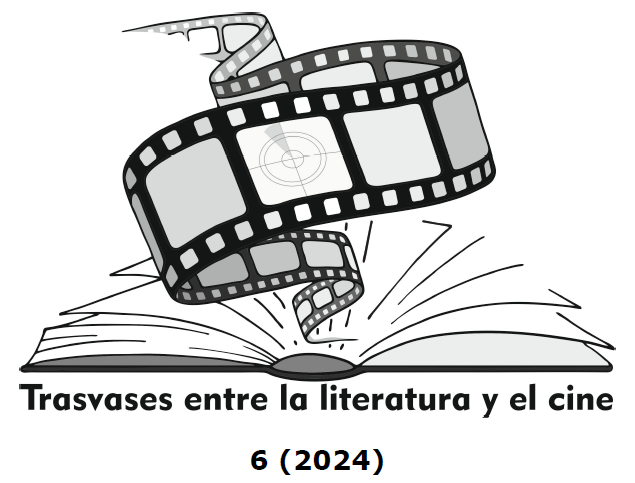Intertextual interferences between Lovecraft, Sartre, and Cronenberg
DOI:
https://doi.org/10.24310/tlc.6.2024.19789Keywords:
Intertextuality, David Cronenberg, Sartre, Lovecraft, body horrorAbstract
In 2002, philosopher Eduard Punset interviewed David Cronenberg on the television program Redes. In this interview, the Canadian filmmaker claimed to have been influenced by an amalgam of writers and thinkers, including Jean-Paul Sartre and H.P. Lovecraft. In this article we analyze the intertextual interferences as well as the differences and similarities between Sartre's work and the principles of Lovecraftian cosmic horror in Cronenberg's cinema. Likewise, we trace the ideological precepts on which this intertextuality has been able to influence body horror, the horror subgenre of which Cronenberg himself disavows, although he is considered the pioneer and main exponent.
Downloads
Metrics
Publication Facts
Reviewer profiles N/A
Author statements
Indexed in
-
—
- Academic society
- N/A
- Publisher
- Universidad de Málaga
References
Cronenberg, David (2002), Entrevista concedida a Eduard Punset, Redes, 259, Ciencia, terror y cine, Radio Televisión Española.
Cronenberg, David (2007), «Body Language: An Interview with David Cronenberg», Wired.com. [En línea: https://www.wired.com/2007/12/body-language-a/. Fecha de consulta: 28/04/2024].
Cronemberg, David (2016) Consumidos, Barcelona, Anagrama.
Cronenberg, David (2021), David Cronenberg: Interviews (Conversations with Filmmakers Series), en D. Schwartz (ed.), University Press of Mississippi.
Díaz Romero, Paula (2015), «Cuerpo existido, cuerpo situado: Reflexiones sobre el cuerpo en la obra de Jean-Paul Sartre», Síntesis, 4, págs. 1-14.
Dunlap, Aron y Delpech-Ramey, Joshua (2010), «Grotesque Normals: Cronenberg's Recent Men and Women», Discourse, 32/3, págs. 321-337.
Elders, Leo (1997), Jean Paul Sartre: El ser y la nada. Crítica Filosófica, Editorial Magisterio Español.
Fachel de Medeiros, Rosângela (2016). «O Devir-Corpo Dos Personagens De David Cronenberg», Revista FAMECOS, 23/2.
Ferrell, Donald y Silverman, Martin, (2014), «A Dangerous Movie? Hollywood Does Psychoanalysis», J Relig Health 53, págs. 1841–1856.
Fontán, Pedro (1985) Los existencialismos: claves para su comprensión, Editorial Cincel.
Freire, Alfonso y Vidal-Mestre, Montserrat (2022), «El concepto de antihéroe o antiheroína en las narrativas audiovisuales transmedia», Cuadernos.Info, 52, págs.
Genette, Gérard (1989), Figuras III. Traducción de Carlos Manzano, Barcelona, Editorial Lumen.
Han-Jin, Lee (2022), «Implicaciones de la filosofía existencialista de Sartre en la educación moral», Moral Education Research, 34/2, págs. 131-149.
Hill, Brockton D. (2012), «A Dangerous Method. (2011). Directed by David Cronenberg», Psychological Perspectives 55/2, págs. 263–68.
Joshi, Sunand Tryambak (1990), H. P. Lovecraft: The Decline of the West, Wildside Press, New Jersey.
Kristeva, Julia (1978), Semiótica 1, Fundamentos.
Loredo, José Carlos, Castro, Jorge, Jiménez, Belén y Sánchez, Iván (2005). «“New Flesh” and psychology: The example of Cronenberg’ cinema», Studies in Psychology, 26/2, págs. 271-283.
Lovecraft, Howard Phillips (1989), El horror en la literatura, Alianza, Madrid.
Martínez Labra, Tania (2022), «Lo abyecto y lo siniestro en el horror corporal. Una perspectiva psicoanalítica y afectiva», Revista de Antropología Social, 30, págs. 1-16.
Mathijs, Ernest, (2008), The Cinema of David Cronenberg: From Baron of Blood to Cultural Hero, Wallflower.
Milligan, Chloe Anna (2017), «Uncomfortable in the New Flesh: Adapting to Body Horror in the Cinema of David Cronenberg», Trespassing Journal: an online journal of trespassing art, science, and philosophy, 6, págs. 28-43.
Pascal, Marie (2024), «L’espace filmique abject: Naked Lunch et A History of Violence de David Cronenberg», Transcr(é)ation, 4, págs. 1-26.
Prosper, Mérimée y Fernández Valentí, Tomás (2011), «Imágenes malditas. Las adaptaciones cinematográficas de H. P. Lovecraft», Scifiworld, 43.
Reis Filho, Luis (2017), «HP Lovecraft no cinema dos anos 70 e 80: da inadaptabilidade aos novos reinos imaginativos», Abusões, 4/4, págs. 358-387.
Roca Mancebo, Juan Agustín (2013), «Interpretaciones antagónicas de los modelos de cine ballardiano: Steven Spielberg y David Cronenberg», en Modelos de interpretación para el cine histórico, Servicio de Publicaciones e Intercambio Científico.
Sánchez Moreno, Iván y Loredo, José Carlos, (2018), «Nueva Carne en odres viejos: Sobre la subjetividad en el cine del último Cronenberg», Toda as Musas, 2, págs. 111-122.
Sartre, Jean Paul (2007), El Existencialismo es un Humanismo, Barcelona, Editorial Folio.
Sibilia, Paula (2014), «El cuerpo extraño: orgánico, demasiado orgánico», Interdisciplina 2/3, págs. 211-217.
Take One (1982), «Fear on film: Landis, Carpenter, Cronenberg», in Mick Garris (ed.), Nice Guy Productions LTD. [En línea: https://bit.ly/3y64Gho Fecha de consulta: 28/04/2024].
Valencia Tamayo, Luis Felipe (2022), «Cronenberg: La experiencia fílmica ochentera», Revista Escribanía, 20/2, págs. 59-70.
Downloads
Published
How to Cite
License
Copyright (c) 2024 Alfonso Freire-Sánchez, Maria Fitó-Carreras, Montserrat Vidal-Mestre

This work is licensed under a Creative Commons Attribution-NonCommercial-ShareAlike 4.0 International License.
All authors published in this journal accept the following copyright terms:
a. Authors retain their authors´ rights (copyright) and grant First Publication Rights to the journal, which whill be published under a the Creative Commons Attribution-NonCommercial-ShareAlike 4.0 International (CC BY-NC-SA 4.0) license. All about this license is available in the following link: <http://creativecommons.org/licenses/by-nc-sa/4.0>
b. Authors may separately establish additional agreements for the non-exclusive distribution of the version of the work published in the journal (e.g. including it in an institutional repository, or publishing it in a book) with an acknowledgement of its initial publication in this journal.
c. Authors are allowed and encouraged to disseminate their work electronically (e.g. in institutional repositories or on their own website) as this can lead to productive exchanges, as well as earlier and more extensive citation of published work.
The author is responsible for obtaining permission from the copyright holder when using copyrighted materials.
This electronic journal is published by University of Málaga (UmaEditorial), thus it is necessary to cite the origin of any partial or total reproduction.








22.png)










